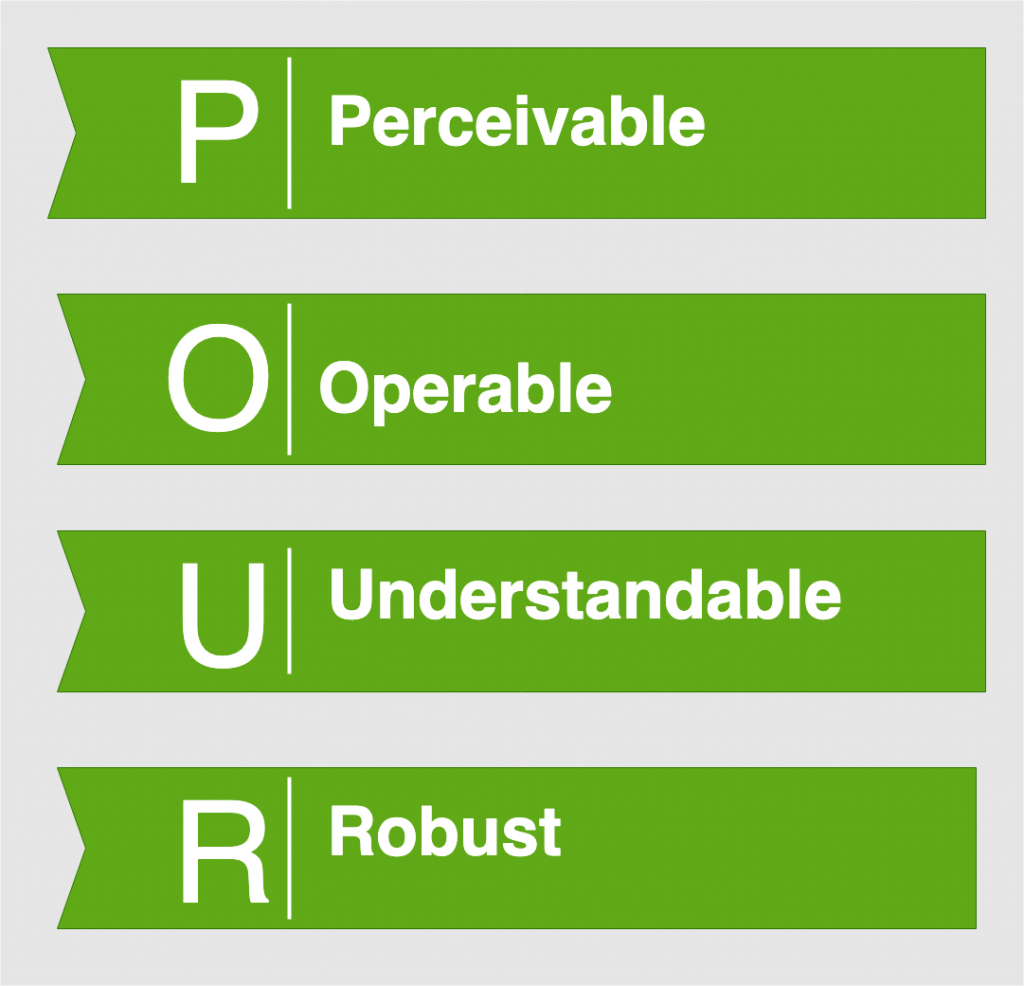About WCAG
WCAG Principles
The first thing to learn about WCAG 2.1 is its four principles. These principles are used to organize guidelines and potential barriers by common elements. Here, we’ll introduce the principles, and, in the next four units we’ll expand on the types of barriers each principle covers, along with examples you can experience for yourself.
The four WCAG principles are:

Web content must be:
- Perceivable: Users must be able to process web content by seeing, hearing, or touching it (and someday maybe smelling it). If one sense is missing, such as sight, information must be perceivable through another sense, such as hearing.
- Operable: In general terms, web content must operate with both a keyboard and a mouse but may also operate through voice or other alternative input devices like switches and a head-controlled mouse.
- Understandable: Web content is presented in a consistent, predictable, readable form that reduces the likelihood of making errors and can be understood by a wide range of users.
- Robust: Web content adopts standards that allow it to function or be understood across a wide range of technologies and will continue to function into the future as technologies evolve.
To help remember the principles, think of the acronym POUR.
The four principles are the top layer of guidance on producing accessible web content. Each principle includes:
- General guidelines
- Success criteria
- Sufficient and advisory techniques
Each of these elements will be covered in the pages that follow.

